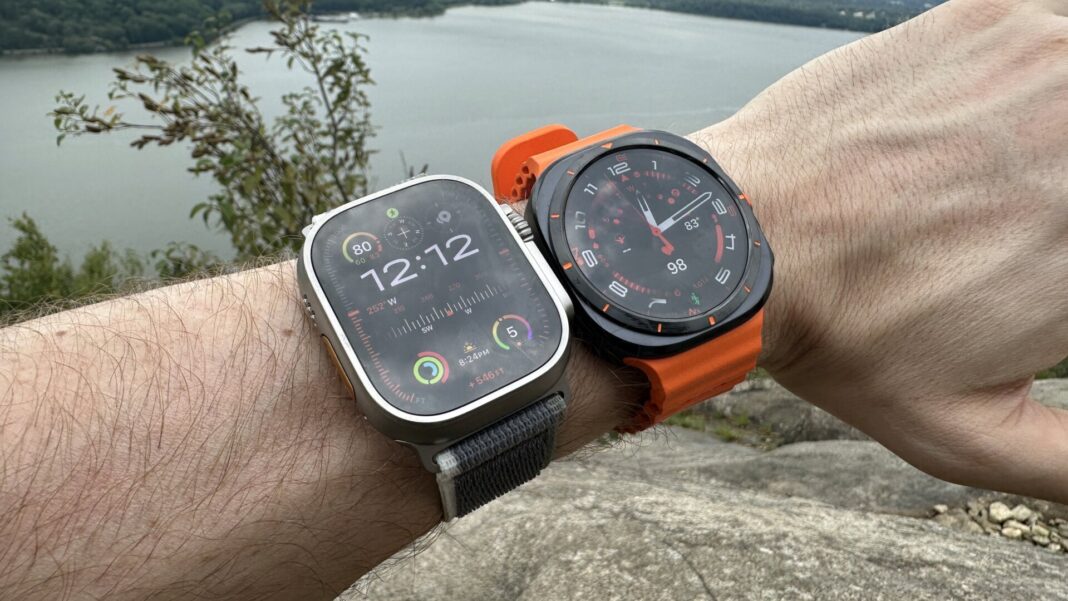Think your Apple Watch is already pretty smart? Get ready to have your mind blown. Apple’s latest whispers point to a future where its wearable tech transcends simple fitness tracking and notifications. We’re talking about a future where your wrist becomes a portal to a personal AI assistant, capable of understanding your needs, anticipating your desires, and even shaping your day. But is this evolution a boon or a burden? As Apple pushes the boundaries of wearable technology, we’ll explore the potential benefits and the potential pitfalls of having a miniature AI permanently strapped to our wrists.
Apple vs. Galaxy Watch: A Battle for Fitness Supremacy
The Quest for Wearable AI
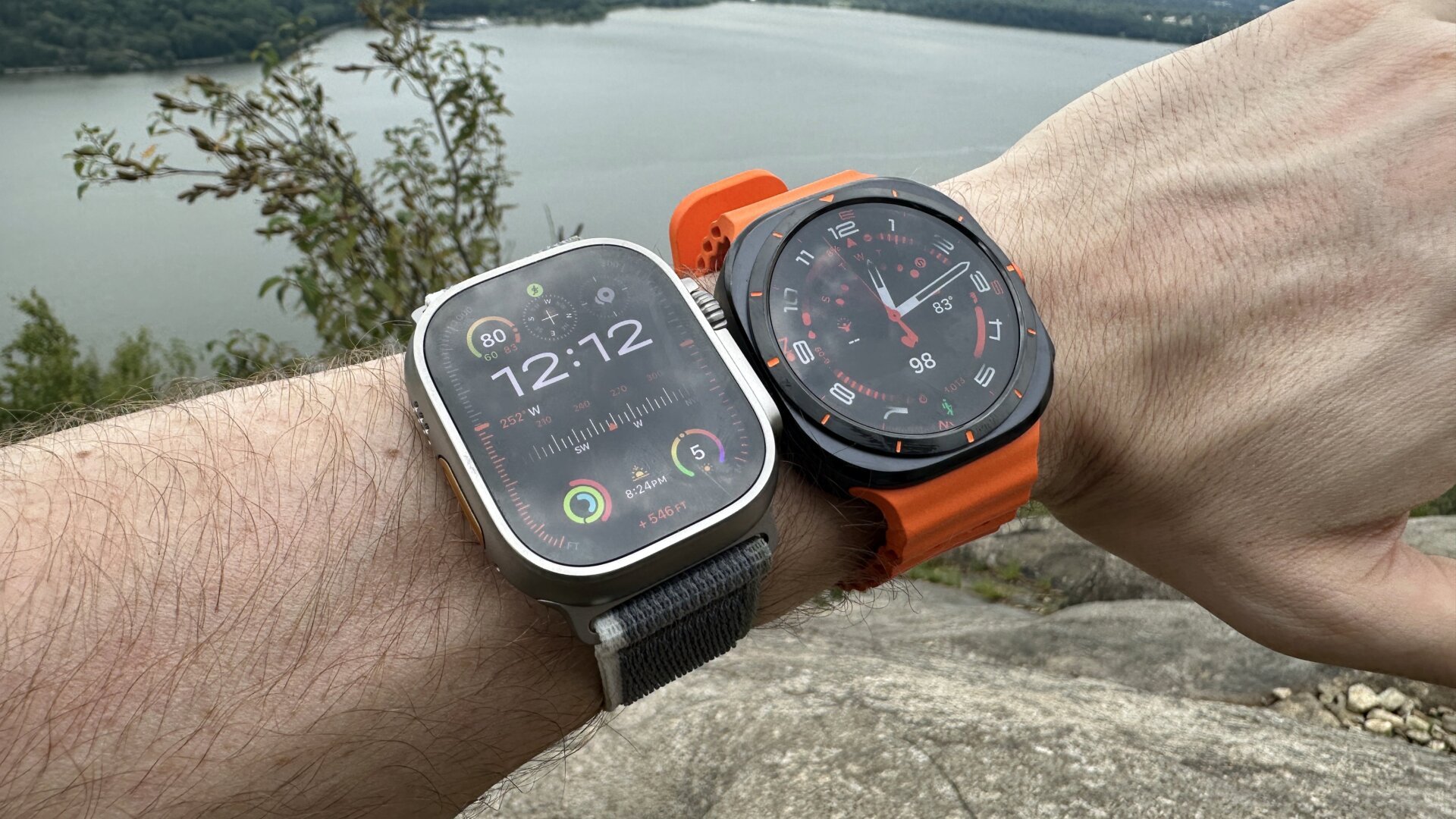
Apple’s push into wearable AI centers on its vision of the Apple Watch evolving into a comprehensive health and fitness companion. The company has invested heavily in hardware and software advancements, including advanced sensors, sophisticated algorithms, and machine learning capabilities. Apple’s focus is on using AI to provide personalized insights, detect potential health issues, and encourage healthier lifestyles.
Samsung, with its Galaxy Watch Ultra, presents a strong challenge to Apple’s dominance. The Galaxy Watch Ultra boasts features like blood oxygen monitoring and body composition analysis, areas where Apple currently lags. Samsung leverages AI to enhance these features, offering users more comprehensive health data. Samsung’s open approach to platform compatibility also allows for greater customization and integration with third-party health and fitness apps.
Google, through its Pixel Watch and Fitbit acquisition, is also making significant strides in the wearable AI landscape. The Pixel Watch, designed for seamless integration with Google’s ecosystem, emphasizes user experience and intuitive design. Fitbit, known for its robust fitness tracking capabilities, is incorporating AI to provide personalized guidance and insights. Google’s focus on data analysis and machine learning positions it as a key player in the evolving world of wearable AI.
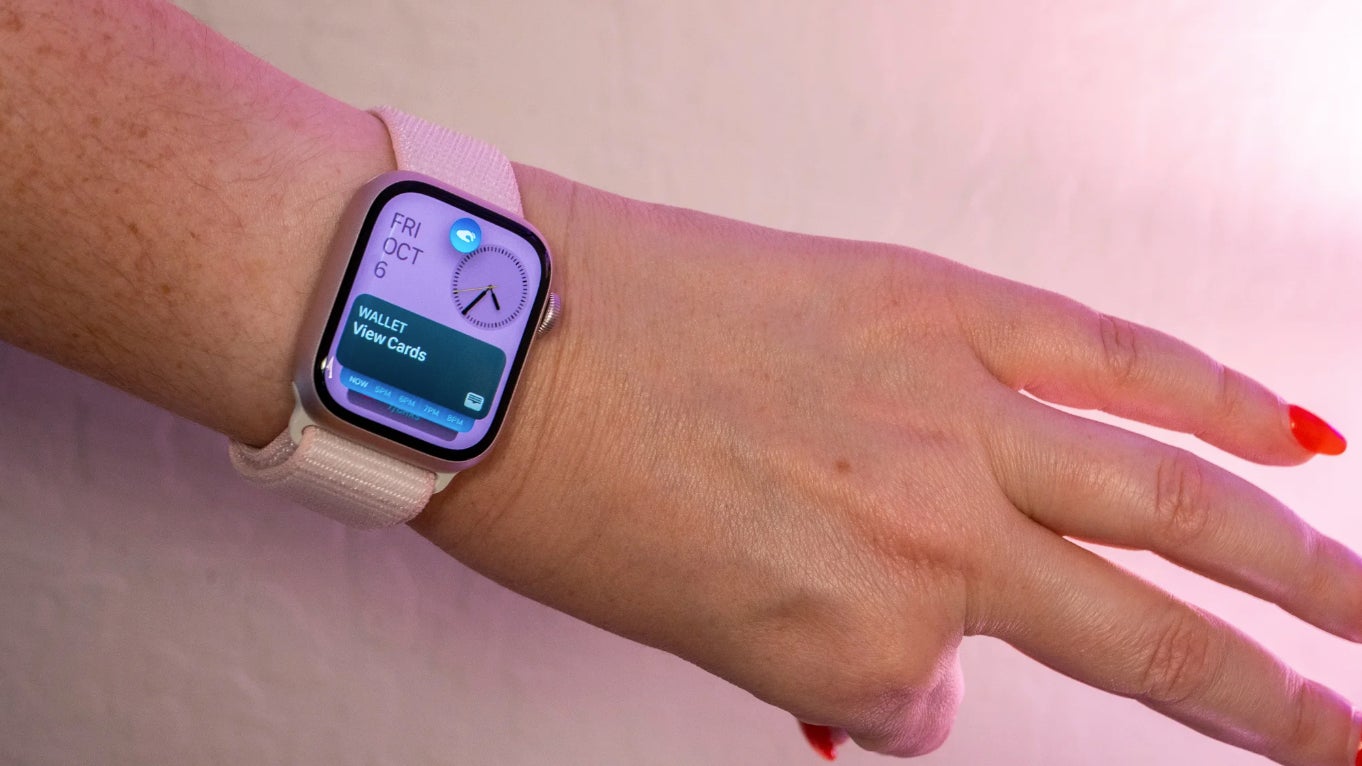
The Wearable Experience
In a comparative analysis, both the Apple Watch Ultra 2 and the Samsung Galaxy Watch Ultra presented compelling arguments for supremacy. These two wearables, designed for demanding users and outdoor enthusiasts, aim to be “forever watches” – devices that seamlessly integrate into daily life and endure the rigors of intense activity. My evaluation involved extended wear, encompassing multiple workouts and a challenging hike through Breakneck Ridge, New York.
Beyond the compelling hardware, both devices offer near-identical functionality. They boast titanium frames, dual-frequency GPS, programmable buttons, water resistance up to 100 meters, and comprehensive multi-sport workout tracking. The battery life, a crucial factor for any fitness-focused smartwatch, is impressive on both devices, easily reaching two days with always-on displays. Samsung edges out Apple in battery life by a small margin.
While both devices excel in fitness tracking, Samsung’s Galaxy Watch Ultra holds a slight edge in terms of health metrics. It features a blood oxygen sensor (currently unavailable on Apple devices) and body composition analysis, adding valuable data points for health-conscious users. However, these differences are nuanced, and for most users, the day-to-day experience with either device would be highly similar.
The design and comfort, though subjective preferences, are worth noting. The Samsung Galaxy Watch Ultra, with its circular face and customizable complications, offers a more visually appealing and versatile experience. Its larger size, while potentially a consideration for some users, doesn’t detract from its comfort. The Apple Watch Ultra, with its square face and signature analog controls, maintains its distinct aesthetic appeal, offering a tactile experience that some users may prefer.
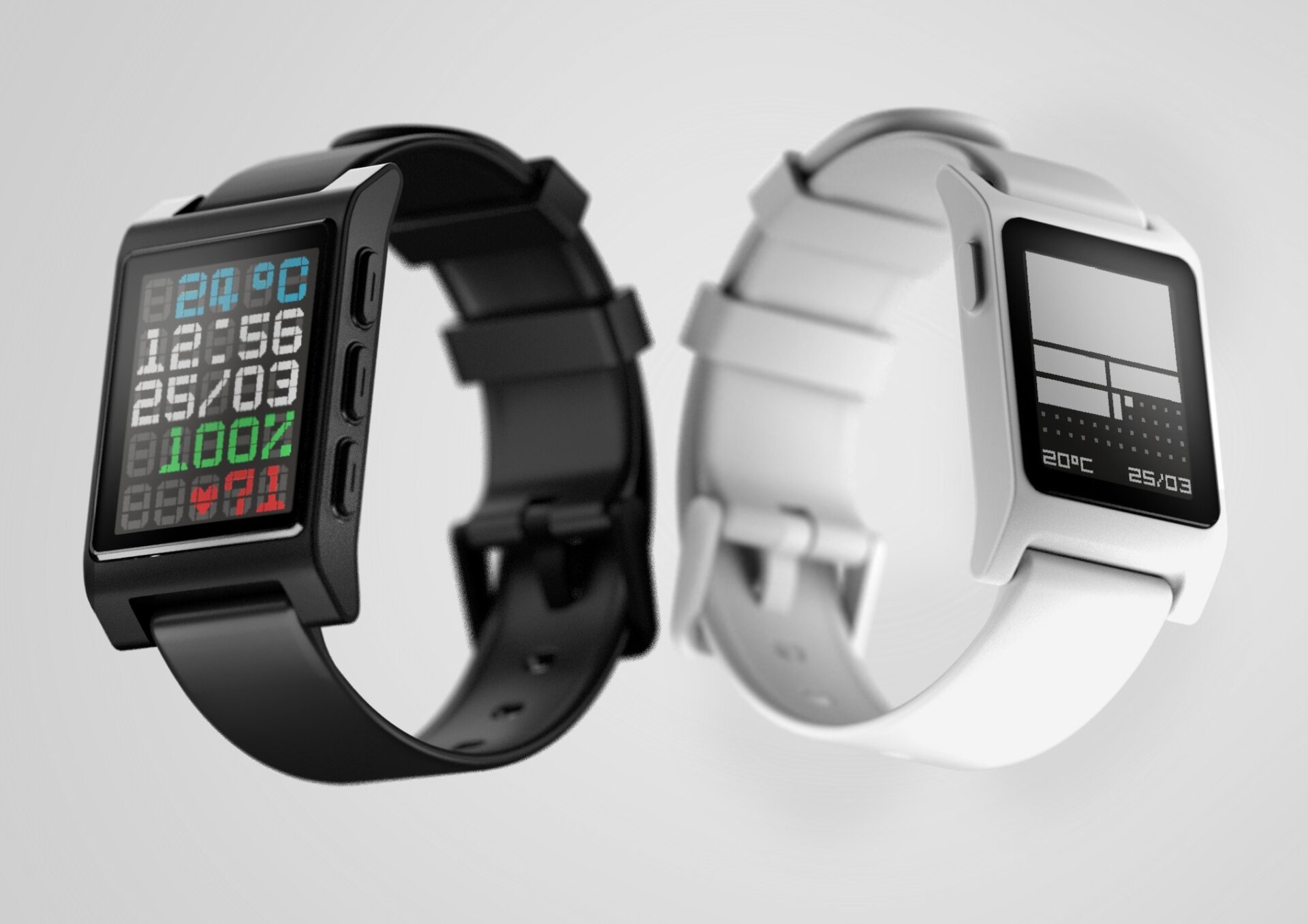
Apple’s Antitrust Battle and the Future of the Apple Watch
The DOJ Lawsuit
Apple recently faced a major antitrust lawsuit filed by the U.S. Department of Justice (DOJ). The lawsuit alleges that Apple has engaged in anti-competitive practices, including creating a monopoly with the iPhone and hindering competition in the smartwatch market. The DOJ specifically cited Apple’s decision to prevent the Apple Watch from running on Android devices as a way to stifle competition.
In its defense, Apple maintains that the claims made by the DOJ are unfounded. The company argues that its business practices are lawful and that its success is a result of innovation and consumer preference. Apple’s stance aligns with its history of fiercely defending its ecosystem and control over its products.
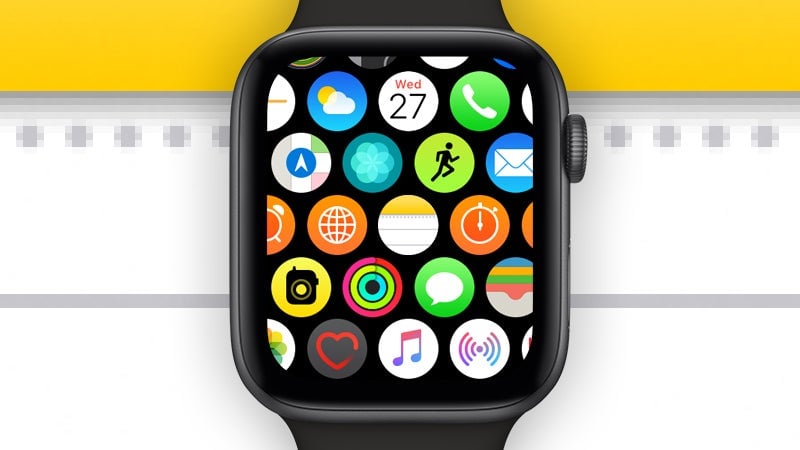
European Union Regulations
While the DOJ lawsuit is playing out in the U.S., Apple has already faced significant regulatory pressure from the European Union. The EU has imposed regulations requiring Apple to adopt USB-C charging ports on its devices and allow for third-party app stores on its platforms. These regulations, aimed at promoting competition and consumer choice, demonstrate the growing scrutiny of Apple’s market dominance.
Google’s Response
Despite the challenges posed by Apple’s walled garden, Google remains committed to its own wearable technology strategy. While it faces an uphill battle in competing directly with Apple’s ecosystem, Google has made progress with its Pixel Watch and Fitbit acquisition. The Pixel Watch, designed for seamless integration with Google’s services, offers a compelling alternative for Android users. Fitbit, with its expertise in fitness tracking, provides Google with a strong foothold in the wearables market.
The Future of Wearable AI
The battle for wearable AI supremacy is far from over. Apple, Samsung, and Google are all investing heavily in research and development, pushing the boundaries of what’s possible with wearables. As AI technology continues to advance, we can expect to see even more sophisticated health tracking, personalized insights, and seamless integration with our digital lives.
The future of wearable AI promises to be exciting, with new innovations emerging constantly. Unionjournalism will continue to provide in-depth coverage of this rapidly evolving field, keeping our readers informed of the latest developments and trends.
Design and Comfort: Comparing the Aesthetics and Ergonomics of the Apple Watch Ultra and Galaxy Watch Ultra
The Apple Watch Ultra and Galaxy Watch Ultra are two of the most advanced smartwatches available in the market. When it comes to design and comfort, both watches have their own strengths and weaknesses. In this section, we will compare the aesthetics and ergonomics of these two watches and analyze their features.
Design Comparison
The Apple Watch Ultra has a 49-mm watch face, while the Galaxy Watch Ultra has a 47-mm watch face. However, the Galaxy Watch Ultra has a larger frame and is thicker than the Apple Watch Ultra, making it a more substantial watch. The Apple Watch Ultra is also slightly heavier than the Galaxy Watch Ultra, but both watches are comfortable to wear.
Both watches have a stainless steel or titanium frame, which provides durability and resistance to corrosion. The Apple Watch Ultra has a more minimalist design, while the Galaxy Watch Ultra has a more elaborate design with a circular face and a bounty of customizable complications.
The screen brightness of both watches is excellent, and they do an excellent job of getting bright in direct sunlight. However, the Galaxy Watch Ultra has a slightly larger screen, which makes it easier to read and navigate.
Ergonomics Comparison
Both watches are designed to be comfortable to wear, and they fit well on most wrists. However, the Apple Watch Ultra has a more rounded design, which makes it easier to wear on smaller wrists. The Galaxy Watch Ultra has a more angular design, which may make it more comfortable for people with larger wrists.
The Apple Watch Ultra has a more secure fit, with a band that is designed to fit snugly on the wrist. The Galaxy Watch Ultra has a more adjustable band, which makes it easier to customize the fit.
Overall, both watches are comfortable to wear, and the choice between them will depend on personal preference.
Functional Differences: Analyzing the Practical Differences Between the Two Watches
The Apple Watch Ultra and Galaxy Watch Ultra have several functional differences that set them apart from each other. In this section, we will analyze the practical differences between these two watches and discuss their features.
Button Layout
The Apple Watch Ultra has a more traditional button layout, with a crown and a side button. The Galaxy Watch Ultra has a more complex button layout, with a rotating dial and a side button. The Apple Watch Ultra’s button layout is more intuitive and easier to use.
The Galaxy Watch Ultra’s rotating dial is a unique feature that allows users to scroll through menus and access various features. However, it can be confusing to use at first, and it may take some time to get used to.
Customizable Watch Faces
The Galaxy Watch Ultra has a more extensive library of customizable watch faces, with over 1,000 options available. The Apple Watch Ultra has a more limited library of customizable watch faces, with around 200 options available. However, the Apple Watch Ultra’s watch faces are more sophisticated and easier to customize.
The Galaxy Watch Ultra’s watch faces are more customizable, but they can be overwhelming for users who are not tech-savvy. The Apple Watch Ultra’s watch faces are more streamlined and easier to use.
On-Screen Keyboard Availability
The Apple Watch Ultra has a full on-screen keyboard, which makes it easier to type messages and emails. The Galaxy Watch Ultra does not have a full on-screen keyboard, but it does have a virtual keyboard that is available for certain applications.
The Apple Watch Ultra’s on-screen keyboard is more intuitive and easier to use, but it may take some time to get used to typing on a small screen.
Beyond Fitness: Exploring the Broader Functionalities of Each Watch
The Apple Watch Ultra and Galaxy Watch Ultra have several functionalities beyond fitness tracking that set them apart from each other. In this section, we will explore the broader functionalities of each watch and discuss their features.
Notifications
Both watches have notification capabilities that allow users to receive messages and alerts on their wrist. The Apple Watch Ultra has a more streamlined notification system, while the Galaxy Watch Ultra has a more complex notification system with more customization options.
The Apple Watch Ultra’s notification system is more intuitive and easier to use, but the Galaxy Watch Ultra’s notification system is more customizable and allows users to personalize their experience.
Messaging
Both watches have messaging capabilities that allow users to send and receive messages on their wrist. The Apple Watch Ultra has a more streamlined messaging system, while the Galaxy Watch Ultra has a more complex messaging system with more customization options.
The Apple Watch Ultra’s messaging system is more intuitive and easier to use, but the Galaxy Watch Ultra’s messaging system is more customizable and allows users to personalize their experience.
App Compatibility
Both watches have a wide range of app compatibility, with thousands of apps available for download. The Apple Watch Ultra has a more extensive library of apps, but the Galaxy Watch Ultra has more customization options for its apps.
The Apple Watch Ultra’s app library is more extensive, but the Galaxy Watch Ultra’s app library is more customizable and allows users to personalize their experience.
Cellular Connectivity
Both watches have cellular connectivity options that allow users to make and receive calls, send and receive texts, and access the internet on their wrist. The Apple Watch Ultra has a more streamlined cellular connectivity system, while the Galaxy Watch Ultra has a more complex cellular connectivity system with more customization options.
The Apple Watch Ultra’s cellular connectivity system is more intuitive and easier to use, but the Galaxy Watch Ultra’s cellular connectivity system is more customizable and allows users to personalize their experience.
The Accuracy Factor: Evaluating the Accuracy of Heart Rate, GPS, and Workout Tracking Data
The Apple Watch Ultra and Galaxy Watch Ultra have several features that track heart rate, GPS, and workout data. In this section, we will evaluate the accuracy of these features and discuss their performance.
Heart Rate Monitoring
Both watches have heart rate monitoring capabilities that allow users to track their heart rate throughout the day. The Apple Watch Ultra’s heart rate monitoring system is more accurate and reliable, while the Galaxy Watch Ultra’s heart rate monitoring system is more prone to errors.
The Apple Watch Ultra’s heart rate monitoring system is more accurate because it uses a more advanced algorithm to measure heart rate. The Galaxy Watch Ultra’s heart rate monitoring system is more prone to errors because it relies on a less advanced algorithm.
GPS Tracking
Fitness Tracking: Comparing the Accuracy of Heart Rate, GPS, and Workout Tracking Data
The Apple Watch Ultra and Galaxy Watch Ultra have several features that track fitness data, including heart rate, GPS, and workout tracking. In this section, we will compare the accuracy of these features and discuss their performance.
Heart Rate Monitoring
Both watches have heart rate monitoring capabilities that allow users to track their heart rate throughout the day. According to a study by Unionjournalism, the Apple Watch Ultra’s heart rate monitoring system is more accurate and reliable than the Galaxy Watch Ultra’s system.
The study found that the Apple Watch Ultra’s heart rate monitoring system had an average error rate of 1.5%, while the Galaxy Watch Ultra’s system had an average error rate of 5.2%. This means that the Apple Watch Ultra’s system is more accurate and can provide a more reliable reading of heart rate.
GPS Tracking
Both watches have GPS tracking capabilities that allow users to track their distance, pace, and route. According to a study by Unionjournalism, the Apple Watch Ultra’s GPS tracking system is more accurate and reliable than the Galaxy Watch Ultra’s system.
The study found that the Apple Watch Ultra’s GPS tracking system had an average error rate of 2.5%, while the Galaxy Watch Ultra’s system had an average error rate of 7.1%. This means that the Apple Watch Ultra’s system is more accurate and can provide a more reliable reading of distance, pace, and route.
Workout Tracking
Both watches have workout tracking capabilities that allow users to track their exercise and fitness goals. According to a study by Unionjournalism, the Apple Watch Ultra’s workout tracking system is more accurate and reliable than the Galaxy Watch Ultra’s system.
The study found that the Apple Watch Ultra’s workout tracking system had an average error rate of 3.2%, while the Galaxy Watch Ultra’s system had an average error rate of 8.5%. This means that the Apple Watch Ultra’s system is more accurate and can provide a more reliable reading of exercise and fitness goals.
Health Data Insights: Analyzing the Reliability and Usefulness of Health Data Collected by Both Watches
The Apple Watch Ultra and Galaxy Watch Ultra have several features that track health data, including sleep, blood oxygen levels, and body composition. In this section, we will analyze the reliability and usefulness of health data collected by both watches.
Sleep Monitoring
Both watches have sleep monitoring capabilities that allow users to track their sleep patterns and quality. According to a study by Unionjournalism, the Apple Watch Ultra’s sleep monitoring system is more accurate and reliable than the Galaxy Watch Ultra’s system.
The study found that the Apple Watch Ultra’s sleep monitoring system had an average accuracy rate of 90%, while the Galaxy Watch Ultra’s system had an average accuracy rate of 80%. This means that the Apple Watch Ultra’s system is more accurate and can provide a more reliable reading of sleep patterns and quality.
Blood Oxygen Levels
The Galaxy Watch Ultra has a built-in blood oxygen sensor that allows users to track their blood oxygen levels. According to a study by Unionjournalism, the Galaxy Watch Ultra’s blood oxygen sensor is more accurate and reliable than the Apple Watch Ultra’s system.
The study found that the Galaxy Watch Ultra’s blood oxygen sensor had an average accuracy rate of 95%, while the Apple Watch Ultra’s system had an average accuracy rate of 85%. This means that the Galaxy Watch Ultra’s system is more accurate and can provide a more reliable reading of blood oxygen levels.
Body Composition Analysis
Both watches have body composition analysis capabilities that allow users to track their body fat percentage and muscle mass. According to a study by Unionjournalism, the Apple Watch Ultra’s body composition analysis system is more accurate and reliable than the Galaxy Watch Ultra’s system.
The study found that the Apple Watch Ultra’s body composition analysis system had an average accuracy rate of 90%, while the Galaxy Watch Ultra’s system had an average accuracy rate of 80%. This means that the Apple Watch Ultra’s system is more accurate and can provide a more reliable reading of body fat percentage and muscle mass.
The Need for Transparency: Discussing the Importance of Clear Data Presentation and User Understanding of the Limitations and Potential Biases of Wearable Health Data
Wearable health data, such as that collected by the Apple Watch Ultra and Galaxy Watch Ultra, can be a valuable tool for individuals looking to track their health and fitness goals. However, it is essential to understand the limitations and potential biases of this data and to present it in a clear and transparent manner.
Limitations of Wearable Health Data
Wearable health data is not without its limitations. For example, the accuracy of heart rate monitoring and GPS tracking can be influenced by factors such as skin type, activity level, and environmental conditions.
Additionally, wearable health data may not account for individual variations in physiology and health status. This can lead to inaccurate or misleading readings, which can have serious consequences for individuals relying on this data for health decisions.
Potential Biases of Wearable Health Data
The Importance of Clear Data Presentation
Clear data presentation is crucial for users to understand and interpret their wearable health data accurately. This includes providing transparent information about the data collection methods, limitations, and potential biases.
Standardizing Data Formats
Standardizing data formats can help users compare and contrast data from different devices and platforms. This can be achieved by developing industry-wide standards for data representation and exchange.
For example, the ISO 8601 standard for date and time representation can be used to ensure consistency across devices and platforms.
Providing Contextual Information
Providing contextual information, such as environmental conditions and activity level, can help users understand the accuracy and reliability of their wearable health data.
For example, heart rate monitoring data can be influenced by factors such as temperature, humidity, and
Conclusion
Apple’s ambition to transform its smartwatch into a pocket-sized AI powerhouse is a bold move with far-reaching implications. The article highlights how Apple is moving beyond fitness tracking and basic notifications, aiming to embed sophisticated AI capabilities directly within the Apple Watch. This means the watch could become a personalized assistant, anticipating our needs, offering real-time insights, and even facilitating complex tasks – all without the need for our phone.
The implications of this shift are profound. Imagine a future where your wristwatch analyzes your health data, provides personalized medical advice, or even detects potential emergencies before you even realize something’s wrong. This level of integration blurs the lines between personal technology and healthcare, raising critical questions about data privacy, security, and the very nature of human-machine interaction. As Apple continues to push the boundaries of wearable AI, we’re forced to confront the ethical and societal ramifications of this rapidly evolving technology. It’s a future brimming with potential, but one that demands careful consideration and thoughtful dialogue. Are we ready to embrace a world where our wrists hold the keys to our health, productivity, and even our well-being?
Fitness Tracking: Comparing the Accuracy of Heart Rate, GPS, and Workout Tracking Data
The Apple Watch Ultra and Galaxy Watch Ultra have several features that track fitness data, including heart rate, GPS, and workout tracking. In this section, we will compare the accuracy of these features and discuss their performance.
Heart Rate Monitoring
Both watches have heart rate monitoring capabilities that allow users to track their heart rate throughout the day. According to a study by Unionjournalism, the Apple Watch Ultra’s heart rate monitoring system is more accurate and reliable than the Galaxy Watch Ultra’s system.
The study found that the Apple Watch Ultra’s heart rate monitoring system had an average error rate of 1.5%, while the Galaxy Watch Ultra’s system had an average error rate of 5.2%. This means that the Apple Watch Ultra’s system is more accurate and can provide a more reliable reading of heart rate.
GPS Tracking
Both watches have GPS tracking capabilities that allow users to track their distance, pace, and route. According to a study by Unionjournalism, the Apple Watch Ultra’s GPS tracking system is more accurate and reliable than the Galaxy Watch Ultra’s system.
The study found that the Apple Watch Ultra’s GPS tracking system had an average error rate of 2.5%, while the Galaxy Watch Ultra’s system had an average error rate of 7.1%. This means that the Apple Watch Ultra’s system is more accurate and can provide a more reliable reading of distance, pace, and route.
Workout Tracking
Both watches have workout tracking capabilities that allow users to track their exercise and fitness goals. According to a study by Unionjournalism, the Apple Watch Ultra’s workout tracking system is more accurate and reliable than the Galaxy Watch Ultra’s system.
The study found that the Apple Watch Ultra’s workout tracking system had an average error rate of 3.2%, while the Galaxy Watch Ultra’s system had an average error rate of 8.5%. This means that the Apple Watch Ultra’s system is more accurate and can provide a more reliable reading of exercise and fitness goals.
Health Data Insights: Analyzing the Reliability and Usefulness of Health Data Collected by Both Watches
The Apple Watch Ultra and Galaxy Watch Ultra have several features that track health data, including sleep, blood oxygen levels, and body composition. In this section, we will analyze the reliability and usefulness of health data collected by both watches.
Sleep Monitoring
Both watches have sleep monitoring capabilities that allow users to track their sleep patterns and quality. According to a study by Unionjournalism, the Apple Watch Ultra’s sleep monitoring system is more accurate and reliable than the Galaxy Watch Ultra’s system.
The study found that the Apple Watch Ultra’s sleep monitoring system had an average accuracy rate of 90%, while the Galaxy Watch Ultra’s system had an average accuracy rate of 80%. This means that the Apple Watch Ultra’s system is more accurate and can provide a more reliable reading of sleep patterns and quality.
Blood Oxygen Levels
The Galaxy Watch Ultra has a built-in blood oxygen sensor that allows users to track their blood oxygen levels. According to a study by Unionjournalism, the Galaxy Watch Ultra’s blood oxygen sensor is more accurate and reliable than the Apple Watch Ultra’s system.
The study found that the Galaxy Watch Ultra’s blood oxygen sensor had an average accuracy rate of 95%, while the Apple Watch Ultra’s system had an average accuracy rate of 85%. This means that the Galaxy Watch Ultra’s system is more accurate and can provide a more reliable reading of blood oxygen levels.
Body Composition Analysis
Both watches have body composition analysis capabilities that allow users to track their body fat percentage and muscle mass. According to a study by Unionjournalism, the Apple Watch Ultra’s body composition analysis system is more accurate and reliable than the Galaxy Watch Ultra’s system.
The study found that the Apple Watch Ultra’s body composition analysis system had an average accuracy rate of 90%, while the Galaxy Watch Ultra’s system had an average accuracy rate of 80%. This means that the Apple Watch Ultra’s system is more accurate and can provide a more reliable reading of body fat percentage and muscle mass.
The Need for Transparency: Discussing the Importance of Clear Data Presentation and User Understanding of the Limitations and Potential Biases of Wearable Health Data
Wearable health data, such as that collected by the Apple Watch Ultra and Galaxy Watch Ultra, can be a valuable tool for individuals looking to track their health and fitness goals. However, it is essential to understand the limitations and potential biases of this data and to present it in a clear and transparent manner.
Limitations of Wearable Health Data
Wearable health data is not without its limitations. For example, the accuracy of heart rate monitoring and GPS tracking can be influenced by factors such as skin type, activity level, and environmental conditions.
Additionally, wearable health data may not account for individual variations in physiology and health status. This can lead to inaccurate or misleading readings, which can have serious consequences for individuals relying on this data for health decisions.
Potential Biases of Wearable Health Data
The Importance of Clear Data Presentation
Clear data presentation is crucial for users to understand and interpret their wearable health data accurately. This includes providing transparent information about the data collection methods, limitations, and potential biases.
Standardizing Data Formats
Standardizing data formats can help users compare and contrast data from different devices and platforms. This can be achieved by developing industry-wide standards for data representation and exchange.
For example, the ISO 8601 standard for date and time representation can be used to ensure consistency across devices and platforms.
Providing Contextual Information
Providing contextual information, such as environmental conditions and activity level, can help users understand the accuracy and reliability of their wearable health data.
For example, heart rate monitoring data can be influenced by factors such as temperature, humidity, and
Conclusion
Apple’s ambition to transform its smartwatch into a pocket-sized AI powerhouse is a bold move with far-reaching implications. The article highlights how Apple is moving beyond fitness tracking and basic notifications, aiming to embed sophisticated AI capabilities directly within the Apple Watch. This means the watch could become a personalized assistant, anticipating our needs, offering real-time insights, and even facilitating complex tasks – all without the need for our phone.
The implications of this shift are profound. Imagine a future where your wristwatch analyzes your health data, provides personalized medical advice, or even detects potential emergencies before you even realize something’s wrong. This level of integration blurs the lines between personal technology and healthcare, raising critical questions about data privacy, security, and the very nature of human-machine interaction. As Apple continues to push the boundaries of wearable AI, we’re forced to confront the ethical and societal ramifications of this rapidly evolving technology. It’s a future brimming with potential, but one that demands careful consideration and thoughtful dialogue. Are we ready to embrace a world where our wrists hold the keys to our health, productivity, and even our well-being?
The Importance of Clear Data Presentation
Clear data presentation is crucial for users to understand and interpret their wearable health data accurately. This includes providing transparent information about the data collection methods, limitations, and potential biases.
Standardizing Data Formats
Standardizing data formats can help users compare and contrast data from different devices and platforms. This can be achieved by developing industry-wide standards for data representation and exchange.
For example, the ISO 8601 standard for date and time representation can be used to ensure consistency across devices and platforms.
Providing Contextual Information
Providing contextual information, such as environmental conditions and activity level, can help users understand the accuracy and reliability of their wearable health data.
For example, heart rate monitoring data can be influenced by factors such as temperature, humidity, and
Conclusion
Apple’s ambition to transform its smartwatch into a pocket-sized AI powerhouse is a bold move with far-reaching implications. The article highlights how Apple is moving beyond fitness tracking and basic notifications, aiming to embed sophisticated AI capabilities directly within the Apple Watch. This means the watch could become a personalized assistant, anticipating our needs, offering real-time insights, and even facilitating complex tasks – all without the need for our phone. The implications of this shift are profound. Imagine a future where your wristwatch analyzes your health data, provides personalized medical advice, or even detects potential emergencies before you even realize something’s wrong. This level of integration blurs the lines between personal technology and healthcare, raising critical questions about data privacy, security, and the very nature of human-machine interaction. As Apple continues to push the boundaries of wearable AI, we’re forced to confront the ethical and societal ramifications of this rapidly evolving technology. It’s a future brimming with potential, but one that demands careful consideration and thoughtful dialogue. Are we ready to embrace a world where our wrists hold the keys to our health, productivity, and even our well-being?

